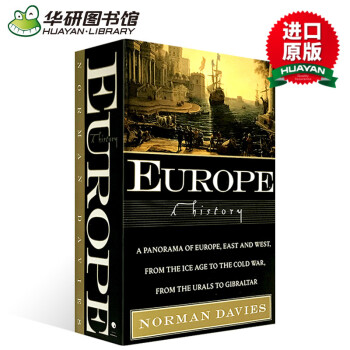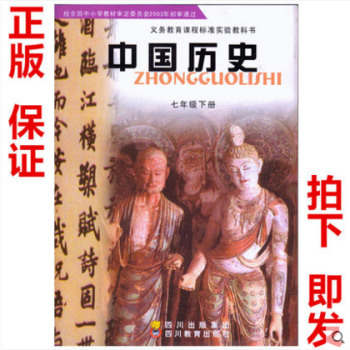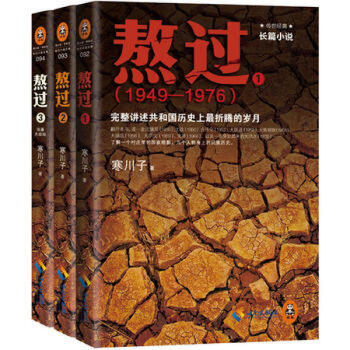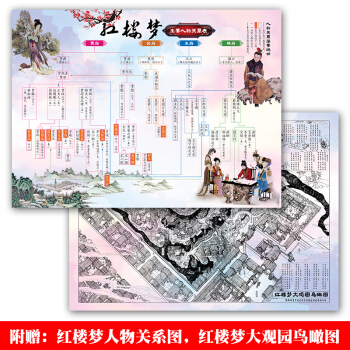

具体描述
书名:Europe: A History 欧洲史
作者:Norman Davies诺曼·戴维斯
出版社名称:Harper Perennial
出版时间:1998
语种:英文
ISBN:9780060974688
商品尺寸:15.6 x 5.8 x 23.5 cm
包装:平装
页数:1392
Europe: A History《欧洲史》是一部从冰河时代延伸到原子时代的历史类精品著作,作者是牛津大学教授诺曼?戴维斯。作者选取了欧洲大陆经历过的十个极具理想的历史时期作为本书的时间主线,讲述了史前时期到第二次世界大战,以及二战至本书出版当年为止的整个欧洲历史。本书为英文版,适合有一定英文基础的历史学习者或爱好者阅读。
推荐理由:
1.首部给予欧洲东部和欧洲西部同等分量的欧洲史,值得历史爱好者一读;
2.以时间为主线由快到慢推进,覆盖了史前时期到第二次世界大战期间的历史;
3.欧洲历史、文化、社会生活从史前到当代的百科全书,融专业性和可读性于一体;
4. 英文原版,书内包括100幅地图、图表及多张插图,图例仔细清晰。
WithEurope: A History, University of London professor Norman Davies has undertaken the near impossible: a synthetic one-volume overview of Europe from prehistory through the present. Remarkably, he has succeeded.Europe: A History is a conventional narrative, proceeding forward in time at a gradually decelerating pace. (The beginning covers millions of years of prehistory, while the final chapter discusses the 46 years between World War II and the book’s publication.) But Davies’s writing—vigorous, incisive, and confidently knowleable—carries the reader along, while the steady sweep of the main narrative is broken up by “capsules,” boxed passages examining particular places, customs, or issues that cut across chronological lines. Davies, who has written two books on Polish history, also gives the eastern part of Europe its due coverage, unlike many of his predecessors, and manages to include commoners and the persecuted or ignored in his story along with the mighty and the royal.Europe: A History won’t please everybody, but it’s a highly intelligent, superbly readable overview that is certain to become a standard text.
Review
“Books of real quality and importance are rare. Norman Davies’ history of Europe is one of them. It is a brilliant achievement, written with intelligence, lucidity and a breathtaking width of knowle... This is a book everyone should read.” — A. C. Grayling,Financial Times
“A noble monument of scholarship, and all the more noble because it is so full of surprise and feeling... There are superb assessments of vastly daunting subjects.” —Jan Morris,Independent
“Monumental, authoritative... A book for enquiring minds of all ages, it will answer hundreds of enquires and provoke thousands more.” —Noel Malcolm,Sunday Telegraph
“No history of Europe in the English language has been so even-handed in its treatment of east and west... Strong characterisation, vivid detail, trenchant opinions, cogent anaylsis all make this tremendous reading.”—Times Literary Supplement
Europe: A History《欧洲史》是一部从冰河时代延伸到原子时代的历史类精品著作,为欧洲历史设计出一种时间和空间的坐标系统,表现出一种难得一见的整体史印象。本书以时间为主线由快到慢逐渐推进,第1章覆盖了长达百万年的史前时期,而在末尾一章讨论了第二次世界大战至本书出版当年为止的46年间的历史。
诺曼·戴维斯捕获了所有的历史事件:罗马的崛起与衰落,阿拉里克人和阿蒂拉人的大举侵略,诺曼征服,罗马教廷的权力斗争,文艺复兴和改革,法国大革命和拿破仑战争,欧洲崛起为世界权力中心以及它因陷入两次毁灭性的世界大战而走向衰落。这是首部给予欧洲东部和欧洲西部同等分量的欧洲史。
《欧洲史》的独特之处在于对内容的选择、重新安排和表现方式,它把传统的叙述体与独特的特写结合在一起,使鲜活的历史事件和人物跃然纸上:299个讲述各个时代方方面面的“概要介绍”(知识窗)散步于整部书,介绍的傗题跨越了各章的界限,描绘了各种奇特的事物和思想,这些通常是过于严肃的历史学家们忽略的;12幅“快照”从很好的视点俯瞰了某一特定历史时期欧洲的全景,如同对时间推进和领土扩张的迅猛进程叫一声暂停,帮助读者松一口气并审视这些重大历史变革,并如棱镜折射出欧洲历史丰富多样的变化;100幅地图和图表、72幅图片覆盖了整个欧洲的历史。所有这些说明,戴维斯的《欧洲史》是近几年出版的极具价值、有说服力的历史读物之一。
作者在牛津大学完成了本书的大部分内容,参考了牛津大学图书馆丰富而古老的资料,同时也得到了哈佛大学乌克兰语研究所和维也纳人文科学研究所的帮助。
Here is a masterpiece of historical narrative that stretches from the Ice Age to the Atomic Age, as it tells the story of Europe, East and West. Norman Davies captures it all-the rise and fall of Rome, the sweeping invasions of Alaric and Atilla, the Norman Conquests, the Papal struggles for power, the Renaissance and the Reformation, the French Revolution and the Napoleonic Wars, Europe’s rise to become the powerhouse of the world, and its eclipse in our own century, following two devastating World Wars. This is the first major history of Europe to give equal weight to both East and West, and it shines light on fascinating minority communities, from heretics and lepers to Gypsies, Jews, and Muslims. It also takes an innovative approach, combining traditional narrative with unique features that help bring history alive: 299 time capsules scattered through the narrative capture telling aspects of an era. 12 -snapshots offer a panoramic look at all of Europe at a particular moment in history. Full coverage of Eastern Europe—100 maps and diagrams, 72 black-and-white plates. All told, Davies’sEurope represents one of the most important and illuminating histories to be published in recent years.
诺曼·戴维斯,1939年生于英格兰。曾获波兰克拉科夫大学博士学位,原伦敦大学东欧斯拉夫学院教授,在伦敦大学执教多年,主要研究方向为中欧与东欧史。现任午津大学沃尔夫森学院研究员、教授。
主要著作:
《起义在1944年:华沙之战》(Rising, 44: The Battle for Warsaw),被《纽约时报》评为2004年度100本畅销书之一。
《上帝的操场:波兰史》(God’s Playground: A History of Poland)
《欧洲的心脏:与波兰当代有关的历史》(Heart of Europe: The Past in Poland’s Present)
《不列颠群岛:一部历史》(The Isles: A History)
《微观世界:一个中欧城市的肖像》(Microcosm: Portrait of a Central Euronean City)
Norman Davies C. M. G., F. B. A. is Professor Emeritus of the University of London, a Supernumerary Fellow of Wolfson College, Oxford, and the author of several books on Polish and European history, includingGod’s Playground,White Eagle,Red Star, The Isles,MicrocosmandEurope: East and West.
Preface
The Legend of Europa
Introduction
I. Peninsula: Environment and Prehistory
II. Hellas: Ancient Greece
III. Roma: Ancient Rome, 753 BC–AD 337
IV. Origo: The Birth of Europe, AD c. 330–800
V. Medium: The Middle Age, c. 750–1270
VI. Pestis: Christendom in Crisis, c. 1250–1493
VII. Renatio: Renaissances and Reformations, c. 1450–1670
VIII. Lumen: Enlightenment and Absolutism, c. 1650–1789
IX. Revolutio: A Continent in Turmoil, c. 1770–1815
X. Dynamo: Powerhouse of the World, 1815–1914
XI. Tenebrae: Europe in Eclipse, 1914–1945
XII. Divisa et Indivisa: Europe Divided and Undivided, 1945–1991
Notes to Chapters
Notes to Capsules
AppendixI. List of Capsules
AppendixII. Notes on Plates and Acknowlments
Appendix III. Historical Compendium
Index
序言
欧罗巴的传说
导言
第1章 半岛:环境与史前时期
第2章 希腊:古代希腊
第3章 罗马:古代罗马,公前753—公337年
第4章 起点:欧洲的诞生,约公330—800年
第5章 中世纪:中世纪,约750—1270年
第6章 危机:危机中的基督教世界,约1250—1493年
第7章 再生:文艺复兴和宗教改革,约1450—1670年
第8章 启蒙:启蒙运动与专制主义,约1650—1789年
第9章 革命:动乱的大陆,约1770—1815年
第10章 动力:世界的发电站,1815—1914年
第11章 熄灯礼拜:阴影笼罩下的欧洲,1914—1945年
第12章 分裂和统一:欧洲的分裂和统一,1945—1991年
附录一各章注释
附录二“概要介绍”注释
附录三“概要介绍”一览表
附录四图片鸣谢说明
附录五历史图解简编
附录六重要人物、事件、机构、地点等的索引
THERE is a marked determinism about many descriptions of Europe’s environmental history. Many Europeans have assumed that their “continent” was so magnificently endowed that it was destined by Nature for world supremacy. And many have imagined that Europe’s good fortune would somehow last forever. “The empire of climate”, wrote Montesquieu in 1748, “is the first of all empires”; and he proceeded to show that the European climate had no rival. For Montesquieu, as for his many successors, Europe was synonymous with Progress.
There has also been a good deal of national parochialism. Even the founder of human geography, the great Paul Vidal de la Blache (1845–1918), one of the intellectual ancestors of the Anuales school, was not above a touch of Gallic chauvinizing. The geography of France, he stressed, was marked by the keynote of variety. “Against the diversities which assail her”, he wrote, “France sets her force d’assimilation, her power of assimilation. She transforms everything that she receives.” On Britain, in contrast, he quotes the doggerel lines about “this paltry little isle, I with acres few and weather vile”. One hundred years later one finds Fernand Braudel doing similar things. Variety is indeed a characteristic of France’s superb make-up. But it is not a French monopoly, it is a hallmark of Europe as a whole.
In fact, the Peninsula of Europe is not really a “continent” at all: it is not a self-contained land mass. At c.10 million km2 (3.6 million square miles), it is less than one-quarter the size of Asia, one-third of Africa, one-half of each of the Americas. Modern geographers classify it, like India, as a subcontinent of Eurasia: “a cape of the old continent, a western appendix of Asia”. Even so, it is impossible to deny that Europe has been endowed with a formidable repertoire of physical features. Europe’s landforms, climate, geology, and fauna have combined to produce a benign environment that is essential to an understanding of its development.
Europe’s landforms do not resemble those of any other continent or sub-continent. The depressions to north and south have been flooded by the ocean to form two parallel sea-chains which penetrate deep into the interior. In the north, the North Sea-Baltic sea lane stretches 1,500 miles (2,500 km) from the Atlantic to Russia. In the south, the Mediterranean-Black Sea system stretches over 2,400 miles (4,000 km) from Gibraltar to the Caucasus. Within these protected seas lie a vast complex of lesser gulfs and a huge spangle of islands. As a result, the ratio of shoreline to landmass is exceptionally high: at c.37,000 km, or more than 23,000 miles, the European shoreline is almost exactly the length of the Equator. For early Man, this was perhaps the most important measure of accessibility.
What is more, since the shores of the Peninsula lie in the temperate latitudes of Eurasia’s western extremity, they are served by a user-friendly climate. Prevailing ocean winds blow westerly; and it is the western coasts of the great continents that stand to benefit most from the moderating influx of sea air. Yet few other west-facing continental coasts can actually enjoy the advantage. Elsewhere, if the western shore is not blocked by towering peaks or icy currents, it is lined by deserts such as the Sahara, the Kalahari, or the Atacama.
The climate of Europe, therefore, is unusually temperate for its latitude. Generally speaking, under the influence of the Gulf Stream, northern Europe is mild and moist; southern Europe is relatively warm, dry, and sunny. Central and eastern Europe enjoy elements of a true continental climate, with clear, cold winters and baking hot summers. But everywhere the weather is changeable. Extremes are usually avoided. Even in European Russia, where the difference between the mean temperatures of January and July can approach 45°C, the range is only half what it is in Siberia. The wettest district in Europe is in western Norway, with an average annual precipitation of 3,500 mm (138 inches). The dryest district surrounds the Caspian Sea, with less than 250 mm ( inches) per annum. The coldest spot is Vorkuta, with a mean January chill of -20 °C; the hottest is disputed between Seville and Astrakhan, both with mean July roasts of +29 °C. These extremes do not compare with their counterparts in Asia, Africa, or the Americas.
Europe’s temperate climate favoured the requirements of primitive agriculture. Most of the Peninsula lies within the natural zone of cultivable grasses. There were abundant woodlands to provide fuel and shelter. Upland pasture often occurs in close proximity to fertile valleys. In the west and south, livestock can winter in the open. Local conditions frequently encouraged special adaptations. The extensive coastline, combined with the broad Continental Shelf, gave fishermen rich rewards. The open plains, especially of the Danube Basin, preserved the nomadic horse-rearing and cattle-driving of the Eurasian steppes. In the Alps -- which take their name from the high pastures above the tree-line -- transhumance has been practised from an early date.
Europe’s climate was probably also responsible for the prevalent skin-colour of its human fauna. Moderate levels of sunshine, and hence of ultra-violet radiation, meant that moderate levels of pigmentation came to be encoded in the Peninsula’s gene pool. Certainly, in historic times pale faces have predominated, together with blond or golden hair and blue eyes in the northern regions. The great majority of Europeans and their descendants can be easily recognized as such from their looks.
Until recently, of course, it was impossible to take anything but the most superficial racial factors into consideration. The analysis of blood groups, body tissues, and DNA imprints, for example, was unknown until the late twentieth century; and it was not realized just how much genetic material all human beings have in common. As a result, racial theorists were apt to draw conclusions from external criteria such as skin colour, stature, or skull form. In reality, the racial make-up of Europe’s population has always displayed considerable variety. The tall, blue-eyed, fair-skinned, platinum blonds of the so-called “Nordic race” which established itself in Scandinavia forms the only group remotely qualified for the label of “white”. They bore little resemblance to the squat, brown-eyed, swarthy-skinned and black-haired people of the so-called “Mediterranean” or “Indo-Mediterranean Race” which dominated large parts of the south…
用户评价
作为一名对欧洲近现代史颇有研究的业余爱好者,我一直在寻找那种能够提供跨学科视角的权威著作,而不是局限于单一的政治史或外交史框架内。这本书的结构似乎正是朝着这个方向努力的。我尤其关注作者如何处理“欧洲一体化”这一宏大命题的历史根源。是从罗马帝国的遗产开始梳理,还是更早的文化认同的形成?期待它能提供一个连贯且有说服力的解释链条,而不是简单地将二战后的政治联盟视为历史的终点。我对那些深入探讨身份认同(Identity)如何随着地理、语言和宗教边界的变迁而重塑的章节非常感兴趣。好的历史著作,应该能让人思考“我们是谁”以及“我们如何走到今天这一步”,而不是仅仅记录“发生了什么”。如果这本书能在这方面提供深刻的洞察,那它的价值将无可估量。
评分天哪,这本书的封面设计简直太吸引人了!那种厚重感和复古的字体搭配,让人一看就知道里面蕴含着深厚的历史底蕴。我一直对欧洲的历史充满了好奇,尤其是那些塑造了我们现代世界的重大转折点。我拿到手的时候,第一感觉就是“哇,这才是正经的历史书该有的样子”。迫不及待地翻开第一页,那种扑面而来的学术气息,让我对接下来的阅读充满了期待。我特别喜欢那种作者在叙事中透露出的对史料的严谨态度,能感受到这不是那种浮光掠影的通俗读物,而是真正下过苦功夫的力作。这本书的装帧质量也相当不错,纸张的质感摸起来很舒服,即使长时间阅读也不会觉得眼睛疲劳,这对于一个历史爱好者来说简直是福音。我希望能在这本书里找到关于中世纪晚期社会结构演变的一些深入见解,特别是关于城市和贵族权力制衡的那部分,期待作者能提供一些全新的视角,而不是老生常谈的那些论调。总之,仅仅是这本书的物理形态,就已经让我对它寄予了厚望。
评分这本书的篇幅和内容的广度令人敬畏,它仿佛是一部浓缩的欧洲文明史百科全书,但又没有牺牲掉叙事的流畅性。我发现自己常常需要停下来,查阅一下地图或者背景资料,因为作者的论证链条非常紧密,环环相扣,稍不留神就可能错过一个关键的逻辑跳跃。这种需要读者投入精力的书,往往是高质量的标志。我特别想知道作者是如何平衡不同区域历史重要性的。欧洲历史何其复杂,从伊比利亚半岛到东斯拉夫地区,从北欧的维京人到地中海的贸易网络,每个角落都有其独特的叙事轨迹。我希望作者在处理大西洋贸易和殖民扩张这段历史时,能展现出足够的批判性和全球视野,而不是仅仅停留在欧洲中心主义的视角下,这对理解当代世界格局至关重要。
评分说实话,我平时看历史书,最怕的就是那种干巴巴的年代罗列,读起来就像在背诵年表一样枯燥乏味。但这本书的行文风格却让人眼前一亮。它不像某些西方史著作那样,总是将叙事集中在宏大的政治事件和战争上,而是相当注重社会生活、文化变迁以及普通人在历史洪流中的挣扎与适应。我尤其欣赏作者在处理复杂历史时期时所展现出的那种细腻的笔触,仿佛能让人“身临其境”地感受到当时人们的喜怒哀乐。举个例子,关于宗教改革时期的描写,不仅仅是路德和加尔文的理论争辩,更深入地探讨了印刷术对普通民众思想启蒙的影响,这一点就非常到位。这种将技术、思想和日常生活交织在一起的叙事方式,极大地丰富了我对“历史”这个概念的理解。我希望能看到更多关于非主流历史声音的挖掘,比如边缘群体的生存状态,而非仅仅是王侯将相的舞台剧。
评分读完前面几章的感受是,这本书的学术严谨性是毋庸置疑的,但更难得的是它那种近乎于散文诗般的文学质感。作者的文字功底非常深厚,即使在描述枯燥的条约签订或复杂的法律改革时,也能用一种引人入胜的方式呈现出来。我尤其喜欢那些在关键历史转折点出现的、简短却精辟的总结性论断,它们就像是给读者指明方向的灯塔。我希望在后续的章节中,作者能够更多地探讨“历史的偶然性”与“历史的必然性”之间的张力。欧洲历史充满了岔路口,某个国王的一念之差,某个思想家的一次演讲,都可能彻底改变历史的走向。这本书能否揭示出这些关键的“如果……将会怎样”的可能性,将是我衡量其卓越程度的重要标准之一。这不仅仅是一本教科书,更像是一场与伟大历史思想家的深度对话。
相关图书
本站所有内容均为互联网搜索引擎提供的公开搜索信息,本站不存储任何数据与内容,任何内容与数据均与本站无关,如有需要请联系相关搜索引擎包括但不限于百度,google,bing,sogou 等
© 2025 book.coffeedeals.club All Rights Reserved. 静流书站 版权所有




















